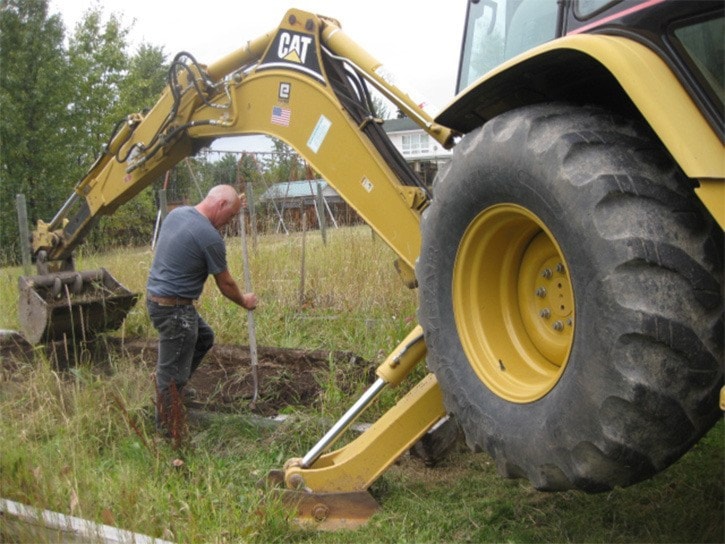In the story ‘Reinvigorating community garden’ published in the Lakes District News’ Aug. 12, 2015 edition, Burns Lake’s Partnering 4 Healthier Communities (P4HC) committee was planning to hold a public meeting on Aug. 20 to determine the level of interest in community gardening.
What the P4HC committee could not have predicted back then was how much time and effort would be put into the town’s community garden over the next couple of months.
Since the Aug. 20 meeting, the newly-formed Burns Lake community garden society has completed a number of improvements to the site. They have also generated a great deal of interest in the garden, already having booked all of the beds for 2016.
Tracey Payne, President of the Burns Lake Community Garden Society, said there has been an outpouring of in-kind donations and volunteer time.
Volunteers have cut back the overgrowth of grass and thistles using a six foot deck mower behind a tractor, a gas powered weed eater and push lawn mower; removed three tandem truckloads of thistle infested soil using a dump truck; and removed the thistle infested composter bin with a backhoe.
But if you’re wondering why you hadn’t heard about a community garden in Burns Lake before, don’t worry. You are not alone. In fact, the president of the Burns Lake community garden society saw the site for the first time just minutes before the Aug. 20 meeting.
“Even though I am an avid gardener and have lived in the community for some time, I honestly did not know that the garden existed,” she said. “I call it the secret garden.”
Although only 12 residents showed up at the Aug. 20 meeting, almost all of those who attended chose to participate in some way.
“We all agreed that the existing garden was a most excellent site, but that it had to look like there was hope that a good garden could grow there,” said Payne.
The garden is located on municipal land adjacent to the Immaculata Church. The original allotment garden and fence were built in 2002.
Councillor Susan Schienbein explained that although the garden space has been around for a number of years, the garden had been neglected, with only a few of the beds being utilized. In addition, a serious thistle infestation had developed in the garden and there had been little or no grass cutting in recent years, so the site had become quite overgrown.
“The community garden society has done some amazing work in a very short period of time,” said Schienbein.
Payne says she believes the community garden could become a “real asset” to the green space around town. She said the garden is situated on a “naturally beautiful site,” with a fence and a water source. However, she recognizes that it will take time and effort to further develop the site and make it “a point of pride for the community.”
“There is much work to be done to create an attractive green space that improves the appeal of our community,” said Payne.
There are currently 16 allotment beds that already have gardeners. The garden society hopes to add an additional four beds before the 2016 growing season. In addition, the group is currently discussing how they can provide outreach to the elderly, people with mobility issues and young families.
“A key element of our work will be educating participants about the benefits of gardening and growing good local food,” said Payne.
Apart from providing gardening opportunities for all Burns Lake residents, the group hopes the garden will also improve the sense of community and connection to the environment. Furthermore, the group hopes the community garden will provide educational activities and promote food sustainability.
Over the coming winter, the group plans to continue developing plans for the community garden – now with the confidence that they have a broad community support.
“I think that our communal work bees have already demonstrated just how much can be accomplished if people work together,” said Payne.
